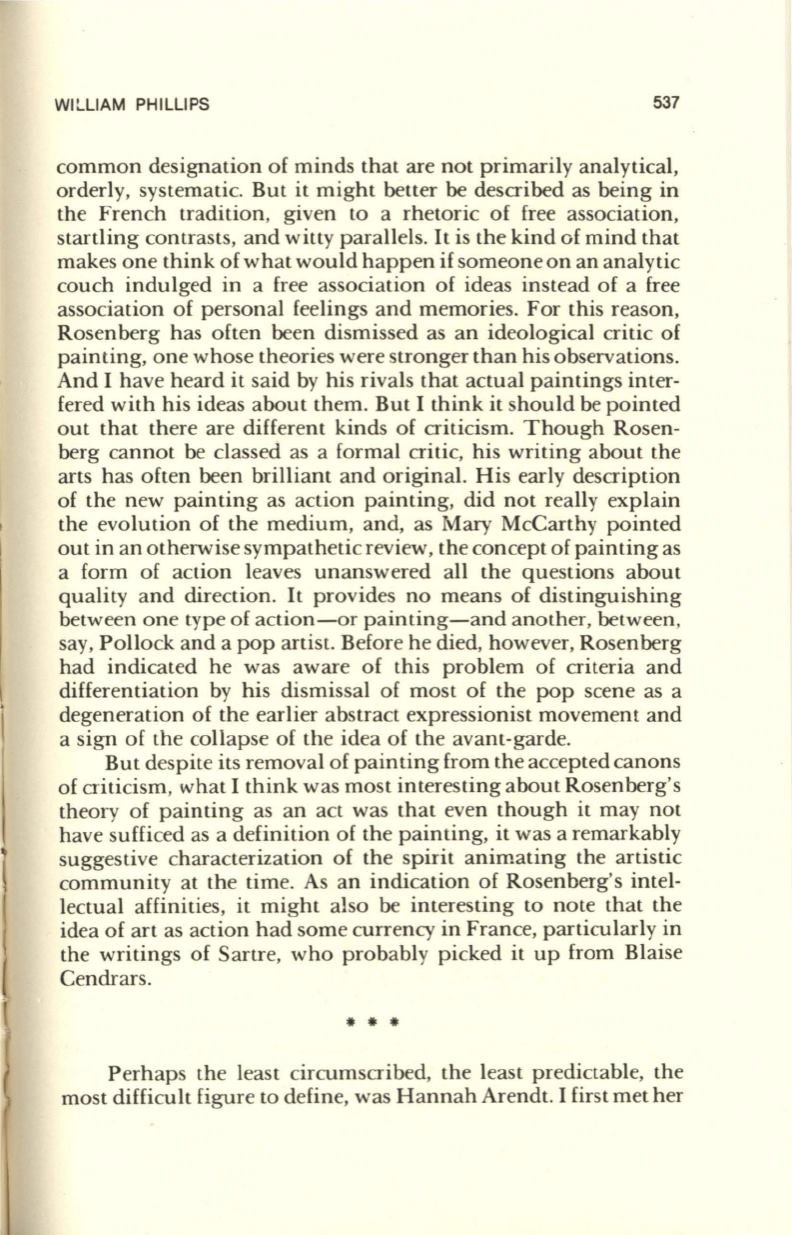
WILLIAM PHILLIPS
537
common designation of minds that are not primarily analytical,
orderly, systematic. But it might better be described as being in
the French tradition, given to a rhetoric of free association,
startling contrasts, and witty parallels.
It
is the kind of mind that
makes one think of what would happen if someone on an analytic
couch indulged in a free association of ideas instead of a free
association of personal feelings and memories. For this reason,
Rosenberg has often been dismissed as an ideological critic of
painting, one whose theories were stronger than his observations.
And I have heard it said by his rivals that actual paintings inter–
fered with his ideas about them. But I think it should be pointed
out that there are different kinds of criticism. Though Rosen–
berg cannot be classed as a formal critic, his writing about the
arts has often been brilliant and original. His early description
of the new painting as action painting, did not really explain
the evolution of the medium, and, as Mary McCarthy pointed
out in an otherwise sympathetic review, the concept of painting as
a form of action leaves unanswered all the questions about
quality and direction.
It
provides no means of distinguishing
between one type of action-or painting-and another, between.
say, Pollock and a pop artist. Before he died, however, Rosenberg
had indicated he was aware of this problem of criteria and
differentiation by his dismissal of most of the pop scene as a
degeneration of the earlier abstract expressionist movement and
a sign of the collapse of the idea of the avant-garde.
But despite its removal of painting from the accepted canons
of criticism, what I think was most interesting about Rosenberg's
theory of painting as an act was that even though it may not
have sufficed as a definition of the painting, it was a remarkably
suggestive characterization of the spirit animating the artistic
community at the time. As an indication of Rosenberg's intel–
lectual affinities, it might also be interesting to note that the
idea of art as action had some currency in France, particularly in
the writings of Sartre, who probably picked it up from Blaise
Cendrars.
,..
,.. ,..
Perhaps the least circumscribed, the least predictable, the
most difficult figure to define, was Hannah Arendt. I first met her


